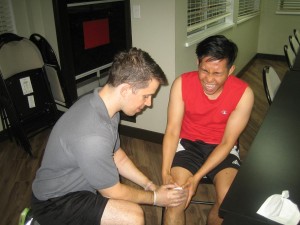Traumatic amputation is defined as a serious injury resulting to severing of a body part such as the toe, finger, arm or leg. The condition might be partial where a part remains attached to the body or total where the severed region is fully detached. This is considered as a medical emergency that requires prompt medical care.
What are the usual causes?
It is important to note that a traumatic amputation has a variety of factors which includes:
- Assaults during street fights or domestic violence
- Industrial accidents when working with equipment and tools
- Vehicular accidents
- Dropping heavy or sharp objects
- Jammed fingers or hands in metal or heavy windows and doors
- Use of explosive devices and land mines
Indications

The signs of a traumatic amputation are based on the seriousness and site of the injury and might include the following:
- Moderate to severe bleeding
- Significant emotional stress and trauma
- Shock and loss of consciousness
- Mild, moderate or severe pain
- An amputation might be partial or full. If an accident involves sharp tools or instruments, the damage might not include the crushed bones and tissues. If caused by blunt or brute force or explosions, it might involve the crushed body parts.
Management of traumatic amputation
Once an individual sustained traumatic amputation, it is vital to call for emergency assistance right away.
- In case the individual remains trapped in the incident site, try to move or transfer the individual to a safe site as safety as possible or wait for the emergency team.
- Try to keep the individual calm and comfortable.
- If there is an injury to the head, back, neck or spine, he/she must be immobilized and avoid any movement.
- Make sure that the individual can breathe normally and perform CPR if needed.
- If a wound is bleeding, place direct pressure to stop the blood flow. In case arterial bleeding is suspected and medical assistance is not available, use a tourniquet.
- If the bleeding could not be control, utilize a tight bandage. This process should be done in a way that it will not worsen the condition.
- The severed body part must be retrieved and cleansed using water. Place it in a moist clean cloth and wrap it carefully and store in a plastic bag. The plastic bag containing the body part must be placed in ice-cold water to allow easier surgical reattachment.
- The individual should lie down on a flat surface and covered with a blanket while keeping the legs slightly raised.
In serious cases, it can be life-threatening and require prompt medical care.
